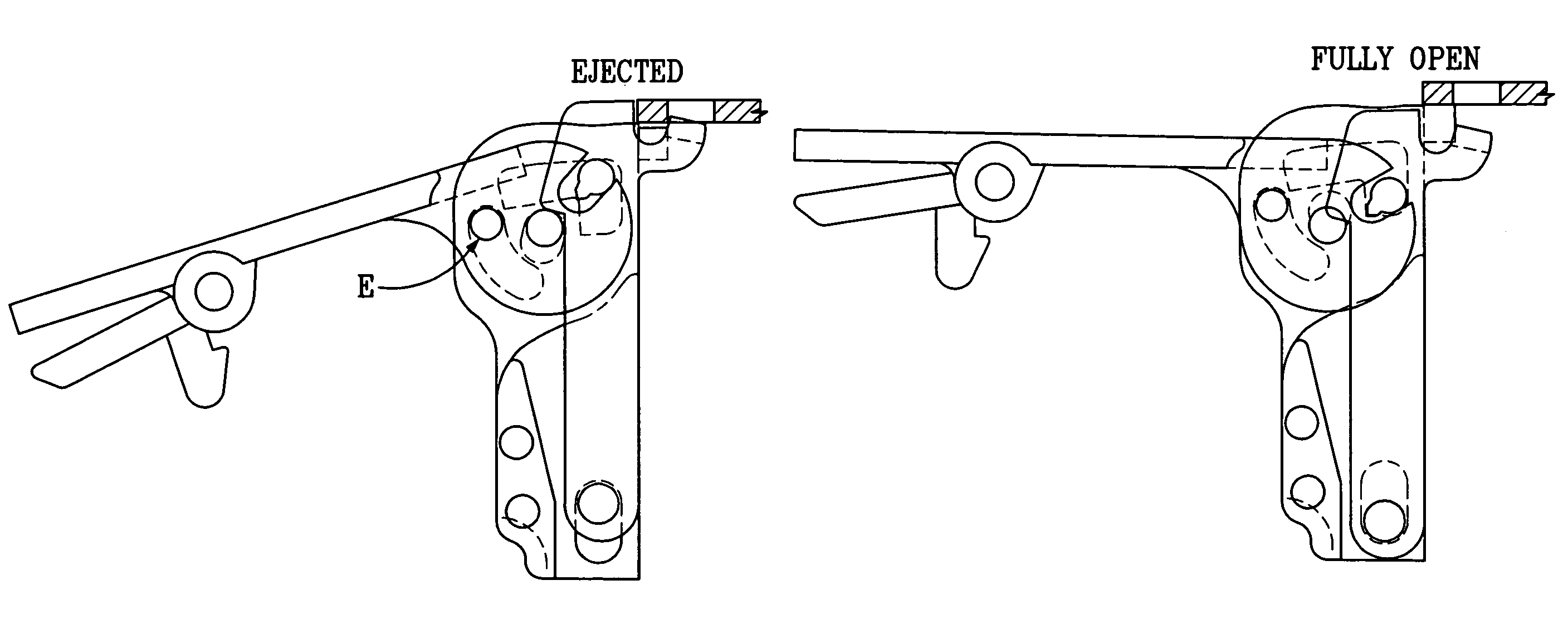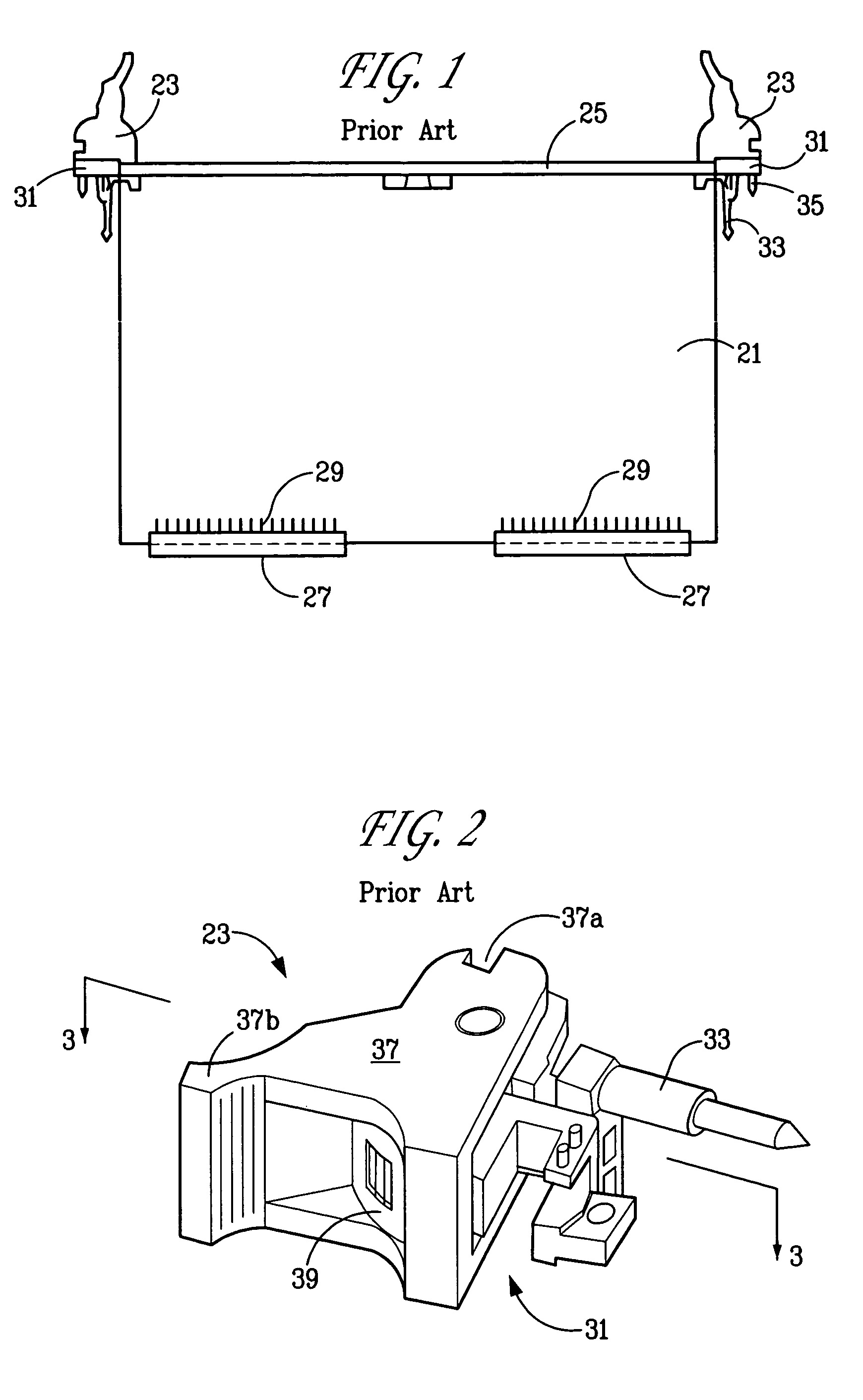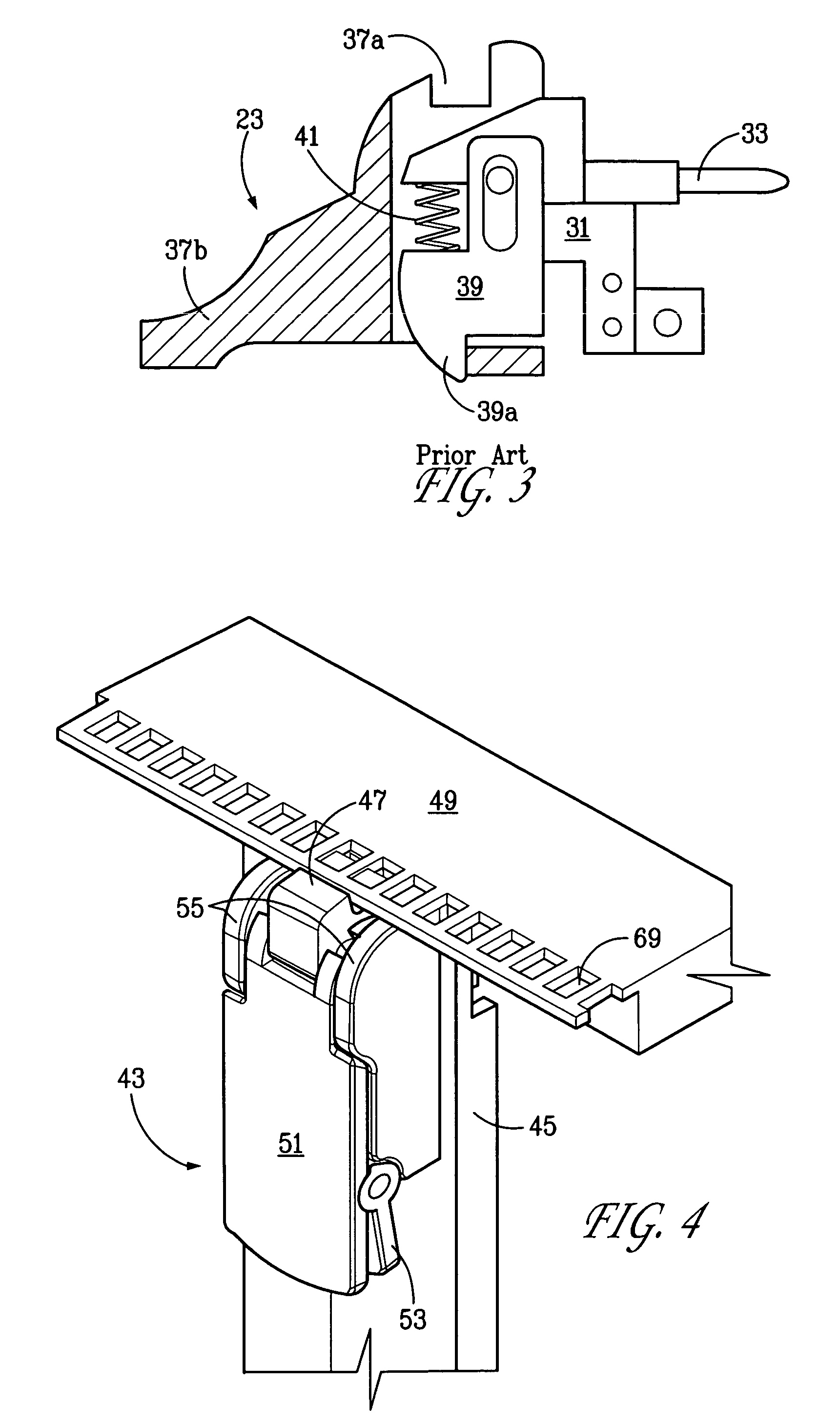Compact PCI ejector latch
a technology of ejector latches and latches, which is applied in the direction of electrical apparatus, support structure mounting, casings/cabinets/drawers, etc., can solve the problems of relatively large amount of emf signal leakage (electromagnetic frequency radiation), low profile of pci board latches, and limited degree of movement and mechanical leverage, etc., to achieve a greater degree of rotation, reduce emf leakage, and facilitate mounting
- Summary
- Abstract
- Description
- Claims
- Application Information
AI Technical Summary
Benefits of technology
Problems solved by technology
Method used
Image
Examples
Embodiment Construction
[0044]The present invention is fold-down low profile inject / eject latch which meets IEEE standards for compact peripheral interconnection (PCI) boards. Such compact PCI boards have been standardized to have aluminum faceplates at their outermost edges. These faceplates primarily provide EMF shielding. The operation of this latch permits a construction / structure which yields enhanced EMC (electromagnetic compatibility) by permitting increased shielding and reduced EMF emissions past an IEEE standards PCI board faceplate. The design and operation of the present latch invention permits a reduction in the cumulative openings and the aggregate area of the openings through the board's faceplate, including the addition of lateral extensions to the faceplate outboard its side edges, which lateral extensions are a part of and within the scope of the present invention.
[0045]The invention creates a motion control of the pawl and handle that is created by separately and sequentially pivoting ab...
PUM
 Login to View More
Login to View More Abstract
Description
Claims
Application Information
 Login to View More
Login to View More - R&D
- Intellectual Property
- Life Sciences
- Materials
- Tech Scout
- Unparalleled Data Quality
- Higher Quality Content
- 60% Fewer Hallucinations
Browse by: Latest US Patents, China's latest patents, Technical Efficacy Thesaurus, Application Domain, Technology Topic, Popular Technical Reports.
© 2025 PatSnap. All rights reserved.Legal|Privacy policy|Modern Slavery Act Transparency Statement|Sitemap|About US| Contact US: help@patsnap.com



